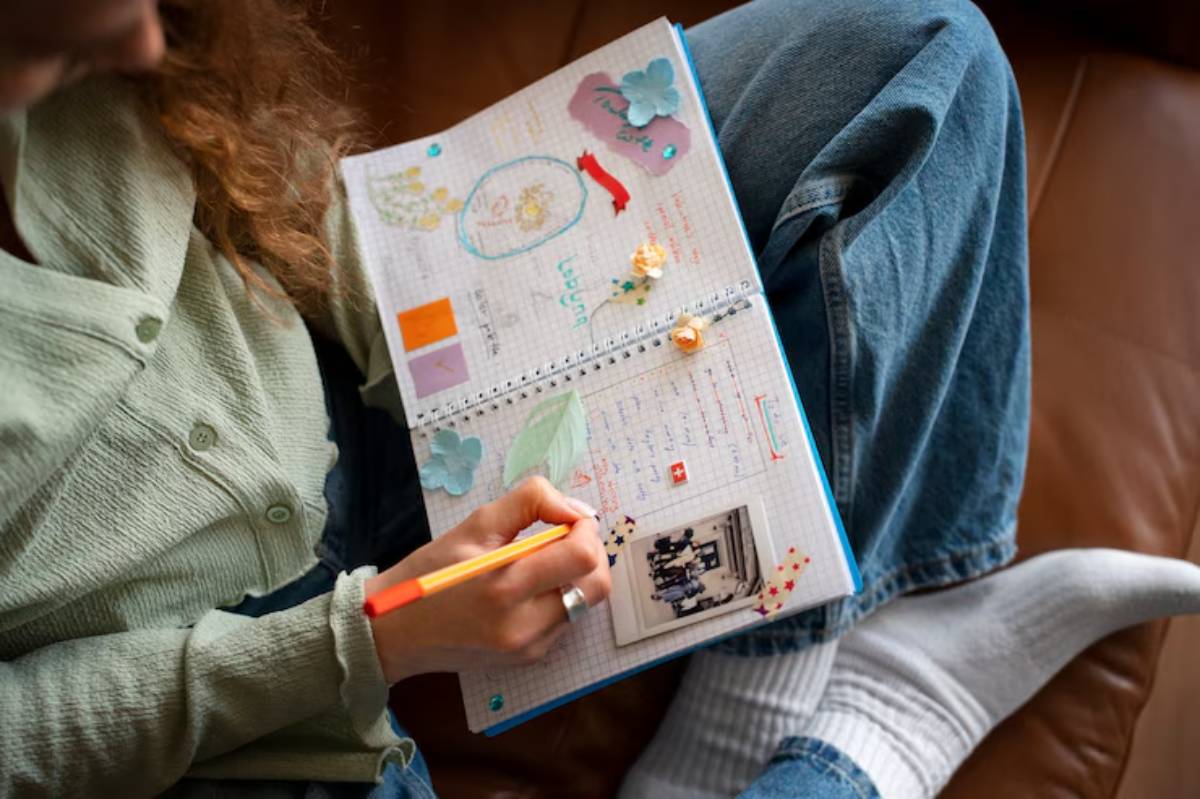
Journaling for PTSD Recovery and Emotional Clarity
Living with trauma can feel like carrying a weight no one else can see. Even in quiet moments, a sound, a smell, or a flash of memory can pull you right back. These responses are part of Post-Traumatic Stress Disorder (PTSD) — a condition that affects the way you think, feel, and navigate everyday life.
But there’s a gentle, research-supported tool that can help bring clarity and healing: journaling. Through structured, intentional writing, many survivors have found relief, resilience, and renewed connection with themselves.
In this article, you’ll explore how PTSD writing therapy works, discover proven recovery journaling methods, and learn how emotional processing writing can offer clarity, control, and calm — all at your own pace.
Why Journaling Supports PTSD Recovery
PTSD disrupts your nervous system. It can make you feel hypervigilant, emotionally detached, or stuck in the past. You may experience nightmares, flashbacks, or a sense of numbness. Traditional talk therapy is powerful, but journaling offers something different — a quiet, private space where no one interrupts, judges, or expects.

Journaling can help you:
- Process memories in a way that feels safe
- Externalise overwhelming emotions
- Regain a sense of personal narrative and coherence
- Reduce symptoms of anxiety, shame, or guilt
- Reconnect with parts of yourself that feel lost
When used gently and consistently, journaling becomes a bridge between surviving and healing.
The Research Behind PTSD Writing Therapy
Dr James Pennebaker, a leading researcher in expressive writing, discovered that writing about difficult experiences, in short, structured sessions, can significantly improve mental and physical health.
Research shows that journaling:
- Lowers blood pressure and cortisol (stress hormone)
- Boosts immune function
- Reduces intrusive thoughts and reactivity
- Supports emotional regulation and memory processing
- Increases feelings of empowerment and agency
The science is clear: the act of writing engages both hemispheres of the brain, helping you process experiences in a more integrated and healing way.
Explore how free-writing exercises for inner peace can help release built-up emotional tension and bring calm.
Gentle Recovery Journaling Methods
The best journaling method is one that feels safe, supportive, and sustainable. If you’re living with PTSD, it’s important to start slow and treat the process with compassion.
Here are five approaches to explore:
1. The Daily 5-Minute Grounding Page
How it works: Set a timer for five minutes. Write whatever comes up — no rules.
Prompt examples:
- “Right now, I feel…”
- “My body is telling me…”
- “Today, I need…”
Why it helps: Keeps you connected to the present moment and builds trust in your ability to check in with yourself.
2. Trigger and Response Tracker
How it works: Create a journal page that logs your triggers, your reactions, and any coping responses.
Example layout:
Date Trigger Physical Response Emotional Response Coping Strategy Notes
Why it helps: Over time, you’ll start to recognise patterns and build a sense of agency over how you respond.
3. The Unsent Letter
How it works: Write a letter to a person, experience, or part of yourself. You’ll never send it — it’s just for you.
Prompt: “Dear [Person/Event], this is what I never got to say…”
Why it helps: Provides emotional release and allows closure without confrontation.
4. Timeline of Healing
How it works: Write out a timeline of your life. Include not just trauma, but joys, growth, and milestones.
Why it helps: Places the trauma in context — as part of your story, not your whole story.

5. The Safe Space Visualisation Page
How it works: Write or draw a place (real or imagined) where you feel safe.
Prompt: “My safe place looks like… sounds like… feels like…”
Why it helps: It can be used as a grounding tool when you’re feeling overwhelmed or triggered.
Emotional Processing Writing Prompts
When you’re ready to go deeper, try these gentle prompts. They’re designed to help you explore without being flooded.
- “What emotion keeps showing up for me lately?”
- “If my body could talk, what would it say?”
- “What helps me feel safe today?”
- “What’s one thing I want to remember about myself?”
- “What does healing look like for me — today, not forever?”
These can be revisited often — your answers will shift as you grow.
Journaling Safely When You Have PTSD
Because trauma lives in the nervous system, it’s important to journal in a way that keeps you regulated and supported.
Safe journaling:
- Start small – 5–10 minutes is enough
- Don’t push yourself into reprocessing trauma – Go only as deep as feels safe
- Use a soft closing ritual – End with grounding prompts, tea, music, or a walk
- Write in a calm space – Avoid writing in stressful environments
- Have a support system – Therapist, friend, or helpline in case emotions feel too big
If a journal entry brings up discomfort, it’s okay to stop and return to it later, or not at all.
Common Mistakes to Avoid
- Expecting journaling to replace therapy – It’s a helpful tool, not a standalone solution
- Rehashing trauma in detail too soon – Stay present-focused unless guided by a therapist
- Skipping the good stuff – Include moments of joy, resilience, and laughter
- Judging your words – It doesn’t need to be neat, deep, or even make sense
- Forcing insight – Some days are for processing, not understanding
Let your journal be a soft space, not a space for pressure or performance.
When to Journal for the Most Impact
You don’t need a strict schedule. But consistency helps.
Best times to journal:
- Morning: Set a tone of calm and intention
- Evening: Reflect and release the day’s emotional weight
- After therapy: Anchor insights and feelings
- Post-trigger: Process the experience while it’s still fresh (if safe to do so)
Even once or twice a week can support clarity and emotional relief.
Understand how the science behind therapeutic journaling supports this practice with brain-based insights.
Conclusion: Healing Doesn’t Begin with Answers — It Begins with Awareness
You don’t have to write a novel. You don’t have to relive the hardest parts of your life. You just have to begin with a word, a line, a breath.
PTSD writing therapy isn’t about digging up pain. It’s about finding language for your truth, your voice, and your healing.
By using recovery journaling methods that feel safe and gentle, you give yourself space to breathe again. And through emotional processing writing, you begin to build trust — not just with the world, but with yourself.
So if today feels heavy, open your notebook. Start with “I don’t know what to say.” And trust that even silence has something to teach you when it meets the page.